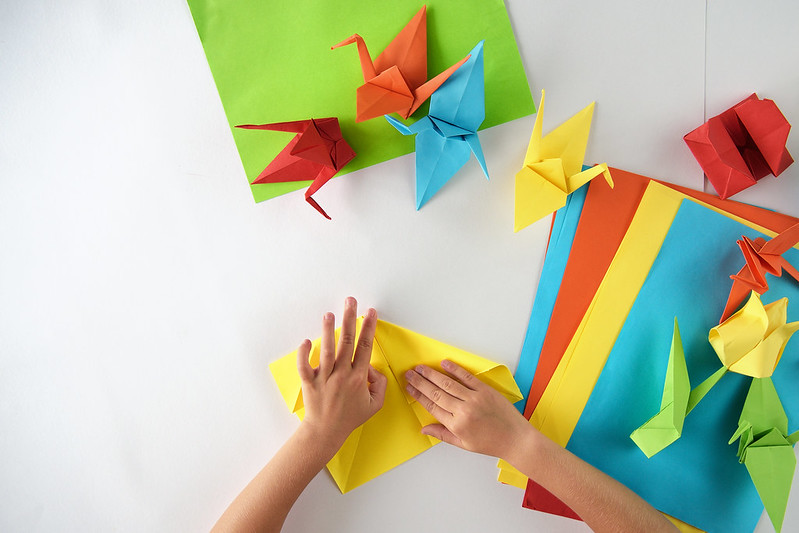
Origami: Japanese Paper Folding
Origami (折り紙) is the Japanese art of folding paper. It is one of the purest and simplest art forms–it requires only a piece of paper and folding techniques. Origami became hugely popular as knowledge of it spread around the world.
History
Origami spread to Japan (from China) in 600 A.D. At the time, paper was scarce and only the rich could afford this hobby. Shinto noblemen would celebrate their weddings by wrapping saki glasses in paper folded in the shape of butterflies, which signified the bride and groom. As the availability of paper spread, origami became a popular hobby for everyone.
Senbazuru at Fushimi Inari Taisha Shrine.
Folding methods were handed down from one generation to the next, and this then represented a cultural heritage for many Japanese families. The first known book that gave detailed instructions on origami was published in 1797, titled “The Secret of One Thousand Cranes Origami” or Hiden Senbazuru Orikata in Japanese.
The grand master of modern origami is said to be Akira Yoshizawa. He created a set of terms and symbols with written instructions on how to create models through paper folding, currently used all over the world.
Types of Origami Paper
Origami paper is usually sold in various sizes, from 2.5 cm to 25 cm. Some sheets are even bigger. It is usually colored on one side and white on the other, but there are some sold with colors or printed patterns on both sides. Origami paper is lighter than regular paper, and you can repeatedly fold it without it becoming too thick and unmalleable. Regular paper is heavier but it can still be used for simple designs. Other usable papers are foil-backed paper, washi (made of wood pulp and is tough), and artisan paper such as gampi, kozo, and lokta, which are all made from long fibers and are quite strong.
Origami collection.
Extra Materials
You can use a flat surface such as a clean table for folding, although many origami artists don’t need to place the paper on any surface. While creating your origami, you can use paper clips to keep some sections folded, tweezers to fold tiny areas, and a spray for wet-folding techniques, as well as to moisten the paper and maintain their final shape.
Types of Origami
Here are some of the more popular techniques:
Modular – a combination of several identical pieces to create one cohesive piece.
Pure Land – using only one fold at a time. Complex folds, such as reverse folds, are restricted.
Wet-Folding – a technique for gentle curves instead of sharp creases. Paper is dampened to allow easy molding.
Action – movable origami (by pulling or tapping one of its parts). Examples include the jumping frog and the traditional flapping bird origami.
Japanese designs also vary from the simple, which grade school children can do in art class, to more complex designs, such as fantasy creatures and intricate modules.


